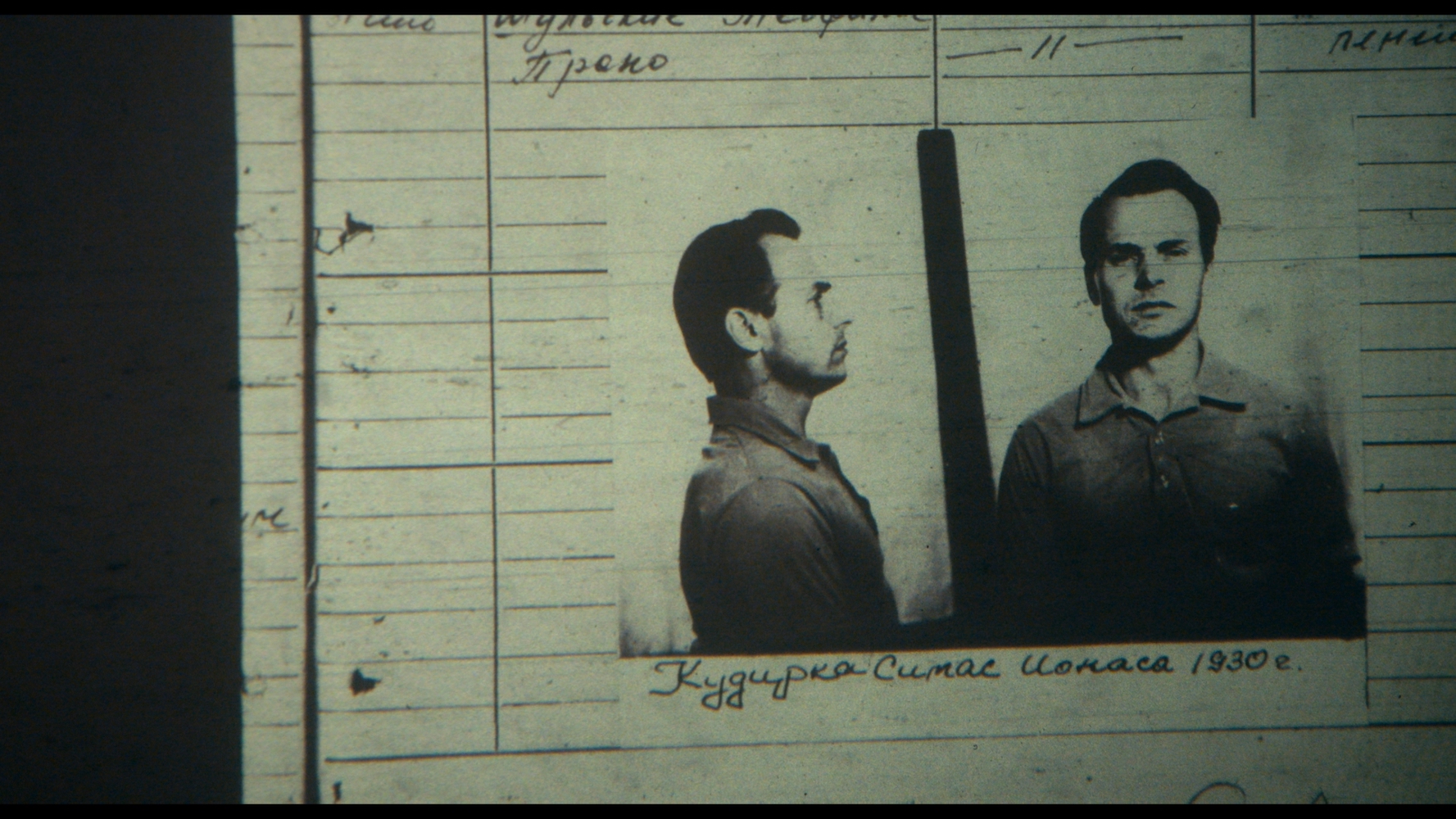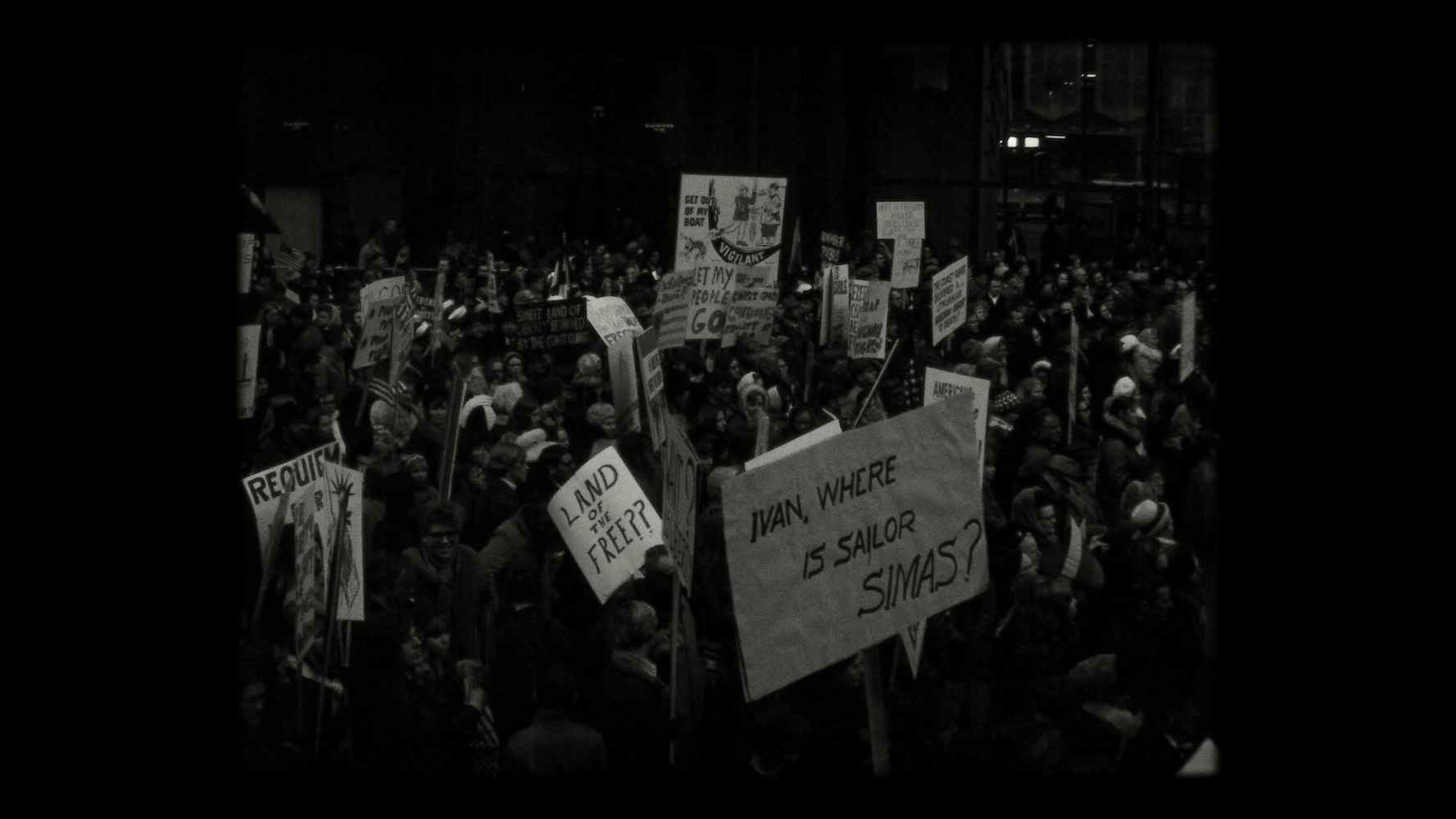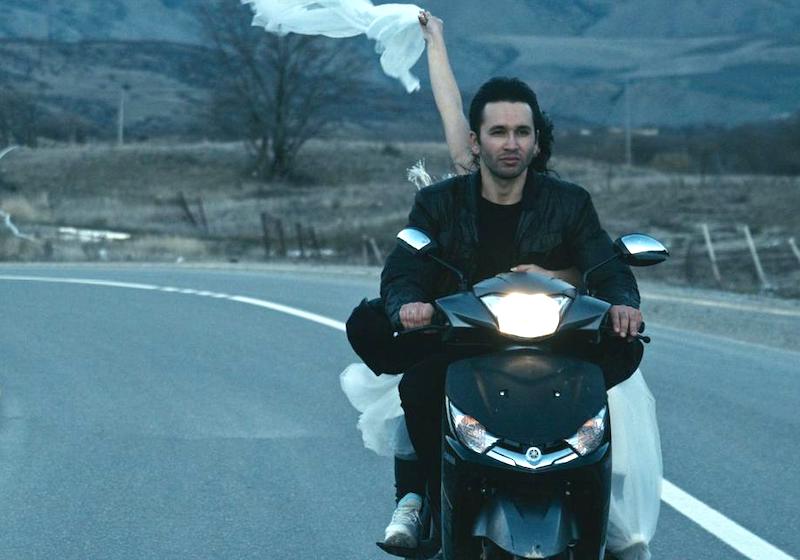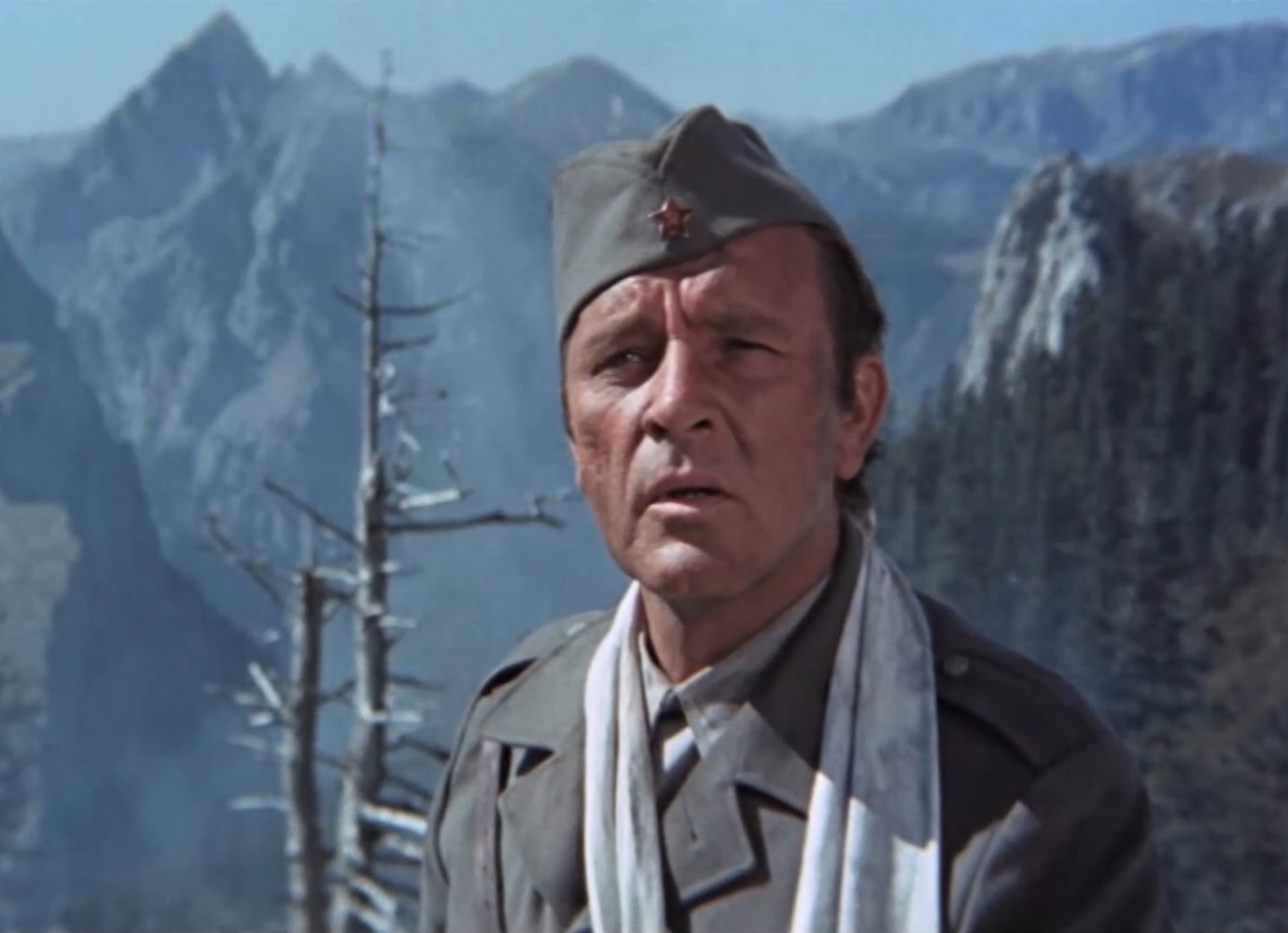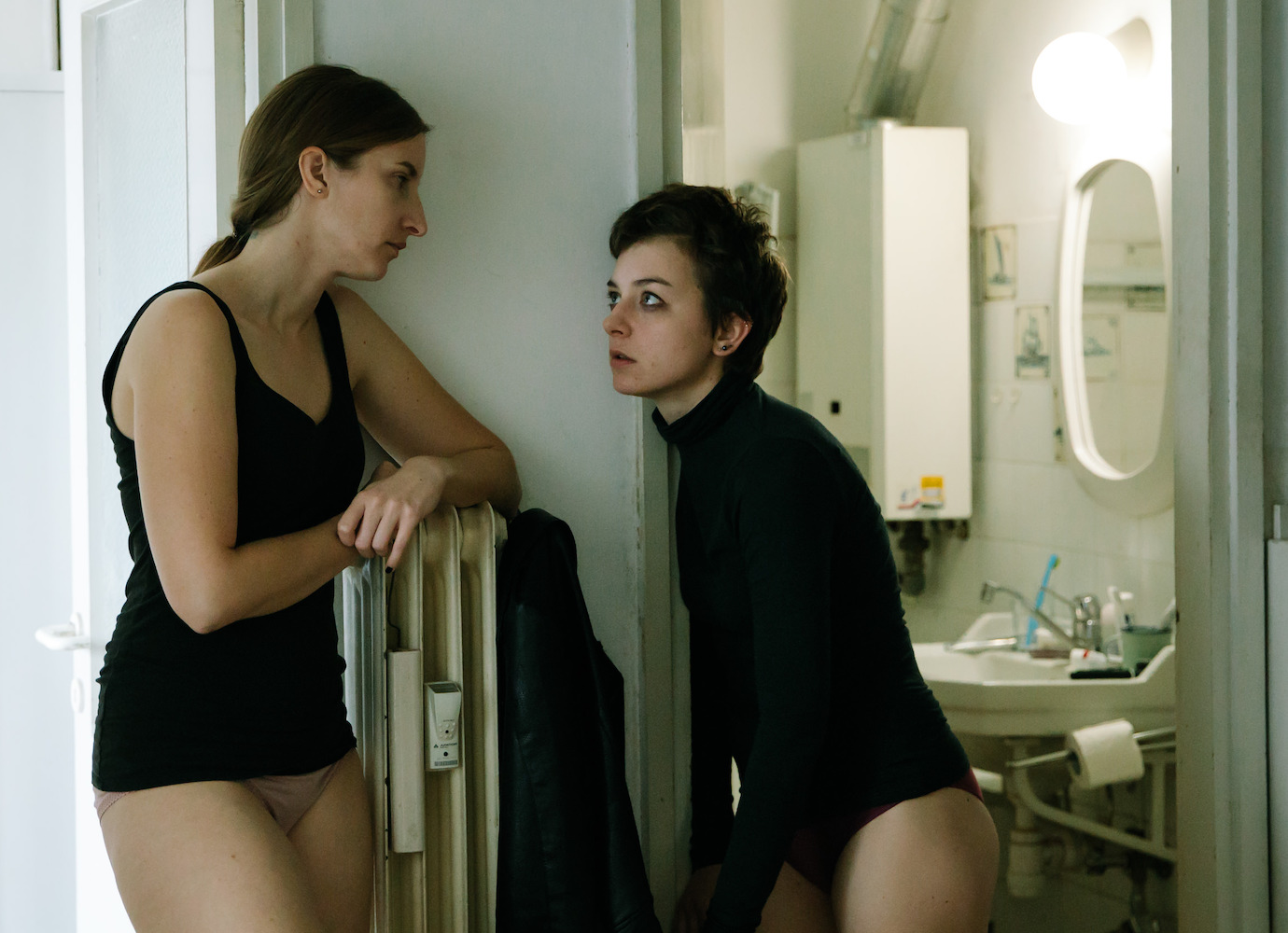Giedrė Žickytė’s The Jump tells the story of a Lithuanian sailor and one epic leap for freedom
Winner of best documentary feature at the Warsaw Film Festival, Giedrė Žickytė’s latest work tells the story of a sailor who decides to jump across icy waters onto an American boat in a desperate bid for freedom.
On 23 November 1970, a Lithuanian sailor called Simas Kudirka sat on a Soviet vessel anchored just off the shore of Martha’s Vineyard, an island located south of Massachusetts’ Cape Cod. Then, he made a desperate decision: to jump across the gelid waters onto an American boat in a bid for freedom. The attempt failed. Despite taking Kudirka on board, the US Coast guard was later forced to return him to the Soviets. Kudirka was tried for treason.
The incident, known for several years as the “Day of Shame,” marked the beginning of a long legal and political battle to save the sailor from the nightmare of a Soviet labour camp. It is also explored by Giedrė Žickytė’s enrapturing new documentary, entitled The Jump. The film immediately immersing the viewer in the tense atmospheres of the Cold War, opening with a special edition of the CBS evening news reporting the event, accompanied by a powerful score echoing those of spy dramas.
Now aged 90, Kudirka appears on screen for the first time in a static shot depicting him slowly diving into the cold water of Pilviškiai lake. Žickyte chooses not only to tell the entire story of the crisis, as also about Kudirka’s life following his historical leap. The narration is enriched by the usage of archive footage as well as a series of precious testimonies, such as the ones of congressman Robert Hanrahan (who pleaded Kudirka’s cause), his speech writer S Paul Zambakis, Lithuanian American activists Daiva Kezys and Grazina Paegle, and even that of former Secretary of State Henry Kissinger.
“In 2014, I was in Los Angeles presenting one of my previous films. After the screening, one of my friends asked me if I heard about the Lithuanian man who, in the midst of the Cold War, jumped from a Soviet ship onto an American one,” Žickytė told The Calvert Journal. “I was captivated by that image: a tiny human figure in between two ships, in between two superpowers, two ideologies. The more research I did, the more I felt that this was my film. Not only because we, as filmmakers, are always dreaming about great stories and this particular one, full of unexpected twists, sounded stranger than fiction, but also because I felt a strong personal connection. I was born under a totalitarian regime, and I was 10-years-old when Lithuania regained its independence. I saw the reflection of my own childhood in these endless American crowds demonstrating for Simas’ freedom in the 1970s. This unique solidarity evoked my memories of the Baltic Way and all those peaceful singing demonstrations.”
Žickyte’s goal was to “re-open” Simas’ memories “in the most authentic way,” offering him the opportunity to recall his past in the real-life locations where those events took place. Halfway through the film, onboard the US Coast Guard cutter Vigilant, when he relives the night when he was captured and beaten by Soviet officers and dragged back to their ship. “For him to be on the same ship and relive his experience once again served as a therapy. It was so true and emotional that the moment he started to recall that scene, I immediately put aside all of my initial ideas, and let the camera follow him,” says Žickyte. “I realised the true magic of life and cinema. Something miraculous happened; there is an old man running around, telling us something that happened 50 years ago, you see that he somehow survived and what he went through. And you are totally involved,” she adds.
While the film remains rooted in the Cold War, Žickyte believe its themes are still crucial to today’s “issues of immigration and seeking asylum, especially in North America and Europe,” where local communities are asked to provide a “response to those seeking safe harbour from repressive societies.” In detail, she explains: “When I look at the faces of the people depicted in the archive footage from the 1970s, who took part to these unforgettable mass demonstrations, it moves me to tears. The efforts of the thousands who protested, contacted the press, wrote letters to the US President, and devotedly worked for so many years, looking for every possible way to save a man they knew nothing about, only his name and one photo he had left behind on the American ship… All of this may look naive! However, these actions brought world attention to Simas’ story and kept him alive. Perhaps, there was already a certain push for change within society and Simas’ jump served as a catalyst. Still, it all looks so miraculous today. I wish people would act more instead of remaining indifferent to the tragedy of the single now… Sometimes we may think – myself included – it’s enough to write “I care” on social media and comfortably think that’s all we can do.”
The Jump is also particularly exacting in its examinations of the so-called “American dream”, which appeals to so many fleeing oppression.
The Jump is also particularly exacting in its examinations of the so-called “American dream”, which appeals to so many fleeing oppression. Following his release in August 1974, Kudirka left Lithuania with his wife, two children and his mother. He initially lived in New Jersey and then moved to New York and Santa Monica, where he operated a landscaping business and served as an apartment superintendent. Initially, Kudirka seems to idealise the other side of the curtain. But, in an interview shot many years after his arrival to the US, Kurdirka will explain, in broken English, how Americans are rich and lucky, but do not fully appreciate what they have, wasting too much and throwing away things that still work — in fact, he discloses that the TV that he owns was salvaged from the rubbish.
“The Jump reveals how America used Kudrika for its own propaganda, how he was part of a show. The only English he could speak was made of clichés, such as ‘freedom’, ‘liberty’, ‘stores’, ‘buying’, ‘consumerism’ and so on,” says the director. “He had to deal with both his fantasies and the reality of living in the country, while not being able to speak the language, not being at home, always feeling a sense of otherness and disconnection.”
In 2002, Kudrika returned to Lithuania, where he currently lives and sometimes watches, with a mix of amusement and strong emotional involvement, the 1978 dramatisation of his own story, David Lowell Rich’s television movie The Defection of Simas Kudirka, starring Alan Arkin in the title role.
Yet even if Žickyte’s film shows the grimy realities of life in the United States, it is a far stronger warning against life under the oppressive Soviet regime. “If there’s a choice between freedom and imprisonment, I think there is only one answer,” she says. “Freedom is much more complex than just the dream of it. It can be hard, uncomfortable, challenging; it brings responsibility, but it’s still incomparable to the slavery. I believe that freedom is something imbibed with mother’s milk. Personally, I am very grateful about the freedom I have today to create, to travel and to talk about my film in the way I want to, with no censorship or fear.”
The Jump was produced by Lithuania’s Moonmakers, Latvia’s VFS Films, and co-produced by France’s Faites Un Voeu and USA’s Naked Edge Films, in association with broadcasters France Télévisions, SVT, YLE, LTV, ERR, LRT, WDR, MDR and ViàVosges.
